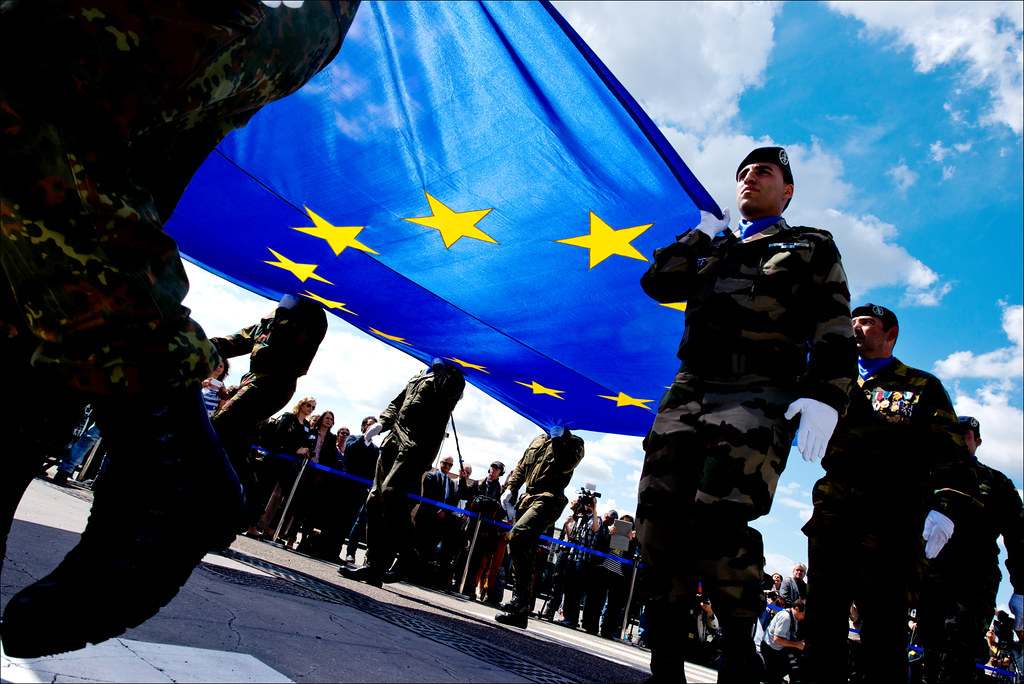In its hasty withdrawal from Afghanistan, contrary to the Biden administration’s initial messages that claimed to make the Trump era an incident of history, Washington has done little to distinguish itself by its regular exchanges with its allies and even less by the coordination of its actions with them. The defeat of the West in Afghanistan calls into question NATO’s involvement in “out-of-area” interventions and American reliability for a number of Washington’s partners. It is therefore hardly surprising that during the meeting of European defence ministers at the beginning of September, the idea of a European army reappeared. Of course, the term European army was not directly mentioned, as the discussion was about the creation of a European rapid reaction force of the size of a brigade (5,000 men). Yet this is what it is all about, whether it is called “European army,” “European rapid reaction force,” “European Union battle groups” or, if we go back to the 1990s, “European corps.”
However, this new proposal for a European rapid reaction force does not date from this meeting. It actually dates back to May 2021, during a previous meeting of European defence ministers, and was discussed on the basis of an informal diplomatic note suggesting the idea, signed by fourteen member states, including France and Germany. Although Paris is presented as one of the initiators and supporters, it is not known at this time whether the idea initially came from its services, possibly in connection with the upcoming French presidency of the European Union (EU) scheduled for the first half of 2022. Little publicized over the summer, this idea has naturally gained renewed publicity in the wake of what is perceived in Europe as the fiasco – or even defeat – in Afghanistan. Configured to resemble a brigade and potentially including air and maritime components, this force could be deployed anywhere, but a priori only outside the European Union and NATO. Among the cases of use mentioned, there would be, as an example, a scenario of a call for help from a government in case of a threat to its stability and security. While the countries that signed the diplomatic note, the EEAS (European External Action Service) and the head of European diplomacy, Josep Borrell, seem to be more or less in favour of the idea, this is less the case for the member states of Eastern and Northern Europe. In addition, some member states fear that this new unit will lead to the end of the European Union’s battlegroups, troops that some states have attached themselves to over the years.
For the time being, it is not yet certain that the proposal to create a rapid reaction force is a real project in itself. Indeed, it is not impossible that the idea will be put forward first and foremost in order to promote a dynamic within the framework of current projects aimed at strengthening the European Union’s defence capabilities. In view of the previous European multinational forces that have been set up (Franco-German brigade, European Union battlegroups, European corps, etc.) as well as the characteristics and functions of this potential military unit, if the idea were to evolve into a concrete project, it is likely that it would be subject to the same failures as its predecessors.
Without going into the full history of the various projects, declarations and units formed by the member states of the European Union, the latest example of the European Union Battlegroups (EUBG) demonstrates quite clearly the weaknesses and shortcomings of this type of proposal and military troops. The battalion sized EUBGs, with a strength of 1,500 troops, were created by decisions taken in 2004. Intended to be “credible and coherent, rapidly deployable, and capable of conducting autonomous operations or the initial phase of larger operations,” they are on call for six months and are composed of several countries. Two EUBGs are supposed to be on standby every six months, and this mechanism is considered operational and has been in place since 2007. As a result, the proposed 5,000-strong rapid reaction force can legitimately be considered a more robust version of the EUBGs. However, in the nearly fifteen years of their existence, they have never been used, despite the opportunities that have arisen (DRC in 2006, Chad in 2008, Mali in 2013, Central African Republic in 2014, etc.). The purpose here is not to enumerate or analyze these failures, but rather to highlight the paradox of thinking that what has not worked for nearly 15 years with only battalion-sized units should succeed with the equivalent of a brigade without profound changes in the characteristics of these units, in decision-making processes, and especially without the regular presence of a willingness to use them during crises. Indeed, finding the will to use them during summits or meetings to set up these units is easy in the recent history of the EU. This is less the case when the EU is directly confronted with a crisis, especially in countries that have troops in European standby units at the time of the crisis.
In the context of the current discussions within the European Union, some are proposing changes to the decision-making process when discussing a troop deployment, the idea being to lighten it or even to put an end to the unanimous vote. Similar failures with the Franco-German brigade (FGB), which involves only two states, do not give reason for optimism, even if the decision-making process within the European Union is lightened. Indeed, the FGB has never been deployed with its regiments in its 30-year history. Moreover, for several years now, the EUBGs six-monthly alert schedule has increasingly included empty or half-full semesters. EU member states are now not only unable to deploy battalions on an emergency basis, but simply to provide two battalions per semester, or about 3,000 troops. It is therefore difficult to imagine that they will be able to provide a permanent rapid reaction force of around 5,000 men. Even if this first obstacle were overcome, employing it and avoiding a fate similar to that of previous European units ever deployed would not be an easy task.
This proposal for a European rapid reaction force naturally took advantage of the debates that followed the debacle in Afghanistan to be publicized. For some of its new supporters, if such a troop had existed last July and August, it would have allowed Europeans to be independent of American decisions during evacuations. However, this reasoning forgets that at the same time, in theory, two EUBGs were on alert, the equivalent of at least 3,000 troops. However, at no time was the deployment of one or two EUBGs on alert mentioned. In concrete terms, deploying two EUBGs would have been impossible, with only one EUBG on standby for the second half of 2021. Moreover, even for these permanent missions and operations, whether they are maritime police (cf. Eunavfor Atalanta) or aimed at assisting in military training (cf. EUTM), the EU is regularly confronted with difficulties in terms of manpower, with long months of negotiations often necessary to gather even a few dozen individuals, and this is true for missions or operations that do not involve combat.
While the Afghan fiasco is a source of bitterness and regret, Europeans, and especially those in the West and South, should not forget that its importance is only relative for Eastern European states facing the Russian threat. As the perception of this threat grows, these states are unlikely to invest much in the idea of a brigade-sized rapid reaction force that would operate several thousand kilometers from their borders, borders that are seen as directly threatened by Moscow. If the EU wishes to become a major security actor in the world in the coming years, solving the problem of manpower for permanent missions and operations would be preferable to launching a theoretical and chimerical new rapid reaction force. A decade ago, a Dutch military man said that the EUBGs were “a great Ferrari, but a Ferrari that was left in the garage”. Given the current state of affairs of the pre-constituted multinational European forces, it is to be feared that the 5,000-strong rapid reaction force is not only a new Ferrari that will be left in the garage, but that it will even remain at the stage of construction plans.





Comments are closed.